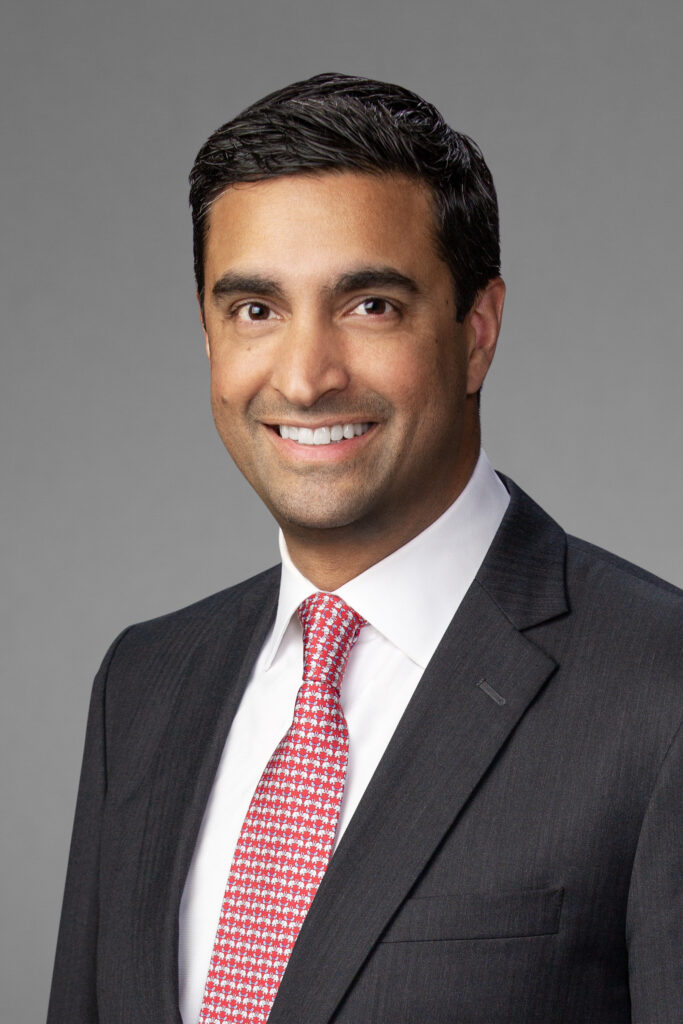Omar Samji, a partner at Shearman & Sterling in Houston, is leaving for Weil.
In an email exchange, Samji told The Texas Lawbook that his attraction to Weil was three-fold: Weil’s core business, the culture and its existing client base.
“Weil’s depth and strength in the areas of M&A/PE, on the one hand, and restructuring on the other hand, make the firm incredibly resilient and well-positioned to be successful,” Samji said. “And for the energy industry, being strong in both of these areas is extremely important.”

Samji, who left for Shearman from Jones Day in 2018, follows the high-profile Shearman departures of Hugh Tucker and Jeremy Kennedy, who both headed for Haynes and Boone last year. Another founding member of Shearman’s Houston office, Coleson Bruce, left the firm last year.
A Shearman & Sterling spokesperson confirmed on Monday Samji has left the firm and thanked him for the contribution he made.
In February Shearman announced the addition of Mona Dajani and Jorge Medina from Pillsbury. In recent years, Shearman added Sarah McLean and Todd Lowther, as transplants from Thompson & Knight and Bill Nelson from Haynes and Boone. All remain at Shearman.
Samji said he was also attracted to the sense of teamwork at Weil. “Weil’s culture is one of success as a team, where everyone is at the top of their game and works towards collective success,” Samji said.
And then there’s the client base. Samji specializes in energy transactions and is gearing his practice toward transition issues — especially decarbonization.
“The firm represents hundreds of PE sponsors, and public and private companies, a large portion of which will be directly or indirectly deploying capital toward decarbonization. The opportunity to help build a future-looking energy team that is attractive to Weil’s existing clients and will draw new clients to the firm is truly special.”
Samji’s recent client roster has been broad. In January he advised WhiteHawk Energy on its agreement to acquire up to $105 million of natural gas mineral and royalty assets primarily in northwestern Louisiana. In March he advised DT Midstream Inc. when it upped its stake in Millennium Pipeline for $552 million in cash. And also in March he advised Silver Hill Energy Partners on its purchase of Haynesville assets in Louisiana and Texas from Pine Wave Energy Partners. Samji also worked on the $300 million IPO of SPAC ESM Acquisition Corp., sponsored by London-headquartered Vision Blue Resources and Texas-based Energy & Minerals Group.
Samji says recent consolidation in upstream assets and midstream networks are logical economic responses to predictable pressures from a fragile market and he thinks they will continue.
“I think the increased pressure for both upstream and midstream operators to deliver earnings and steady cash returns to investors will continue to drive consolidation,” Samji said. “Both PE-backed companies that need to exit, and smaller public companies that have amassed attractive assets, but are limited in their ability to raise additional capital, are great targets for bulge-bracket PE and large corporates to acquire.”
“I also think the diversion of a portion of the capital that would have gone to oil and gas into areas of low-carbon energy is going to drive some of the consolidation and need for scale in the hydrocarbon sector,” Samji said.
Samji said new, transitional sectors in the energy industry — sectors that are neither gas & oil nor, at the other extreme, wind & solar — are developing at a rapid rate. Projects being conceptualized and designed are moving quickly to their next stages, the ones involving large equity and debt checks — and lawyers.
“There is a need for projects to be de-risked before large amounts of capital flow, and that process is underway, namely through long-term bankable offtake contracts, which is where the action is today,” Samji said. “As those come into place, we will see large amounts of capital put to work.”
Samji says the biggest challenges to energy dealmaking — especially in the decarbonization space — is the newness of it all. In order to attract the necessarily large investment dollars, projects need the kind of credit-worthy offtake that is difficult in a sector that is still writing its own standards and rules.
“We are constantly forging new ground and having to analyze and apportion risk in new and creative ways,” Samji said. “This is particularly true in areas such as hydrogen, carbon capture and sequestration, and e-fuels. The parties to the deal are seeking to maximize certainty and minimize risk and ensure that their financial and business models will not get undercut by some risk that wasn’t properly accounted for.”
“So, it’s an exciting time. But to meet these challenges requires creativity and the ability to work as a team and call upon resources from across a firm. Weil has both the teams, and the team culture, to allow me to help clients get deals done in the face of these challenges.”
